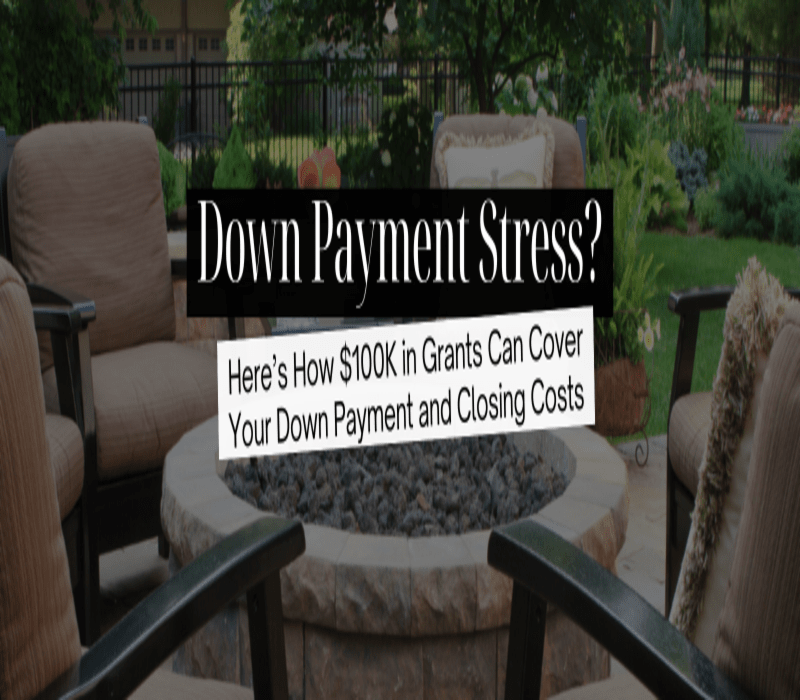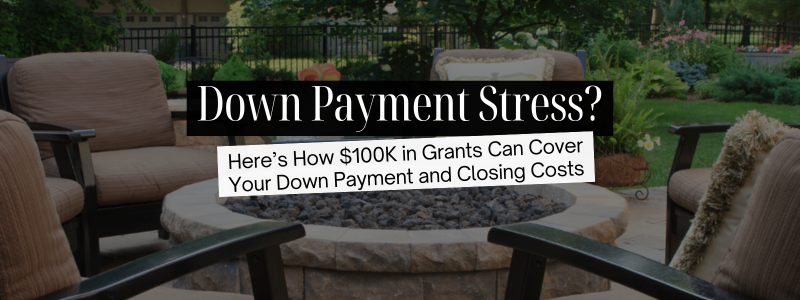Down Payment Programs For First Time Home Buyers


Homeownership can often feel like a distant dream due to the significant upfront costs associated with down payments and closing costs. However, various grants and assistance programs can bridge the gap, making it possible for many to take the leap into homeownership. Here’s how you can access up to $100K in grants to cover these expenses and turn your dream into reality.
Did you know that HUD.gov lists nearly every state-offered program for homebuyers? Each state or city has its unique options, ranging from incredibly low interest rates to down payment assistance and other perks. These programs are designed to ease the financial burden on prospective homebuyers, particularly first-time buyers.
Key Programs to Explore
State and Local Grants:
Many states and local governments offer grants specifically for first-time homebuyers. These grants do not need to be repaid and can significantly reduce the amount you need to save for a down payment and closing costs. Each program has different eligibility criteria, so it’s essential to research what’s available in your area.
Down Payment Assistance Programs (DPAs):
DPAs provide funds that can be used toward your down payment. Some programs offer forgivable loans, meaning if you stay in the home for a certain period, you won’t have to repay the loan. This assistance can make a substantial difference, especially in high-cost areas.
Federal Programs:
HUD provides various programs that offer financial assistance for down payments and closing costs. Programs like the Good Neighbor Next Door, designed for teachers, law enforcement officers, firefighters, and emergency medical technicians, offer significant discounts on home prices in revitalization areas.
Important Considerations
While these programs can provide tremendous support, there are essential factors to consider:
- Income Caps: Most assistance programs have income caps, meaning your eligibility will depend on your household income. These caps vary by program and location, so it’s crucial to check the specific requirements.
- Impact on Negotiation: Using grants or assistance programs might make it harder to negotiate offers. Sellers sometimes prefer buyers with conventional financing over those using grant programs due to perceived complexities and potential delays in the process.
- Refinancing Restrictions: Some programs restrict your ability to refinance your mortgage. If you think you might want to refinance in the future, this is an important factor to consider when selecting an assistance program.
Exploring Alternatives
If a grant or state assistance program doesn’t work out for you, don’t worry—there are still excellent options available. Fannie Mae offers a 3% down payment program specifically designed for first-time buyers. This program requires a lower down payment than the traditional 20%, making homeownership more accessible
.
Steps to Secure Grants and Assistance
- Research Thoroughly: Start by visiting HUD.gov to explore the programs available in your state. Additionally, consult with local housing agencies to understand the full range of options.
- Check Eligibility: Ensure you meet the eligibility requirements for the programs you are interested in. This includes verifying your income, employment status, and other criteria.
- Prepare Documentation: Gather necessary documents such as proof of income, tax returns, and employment verification. Being prepared can expedite the application process.
- Consult with a Real Estate Agent: Working with a knowledgeable real estate agent can help you navigate the complexities of these programs. They can provide valuable insights and guide you through the application process.
- Apply Early: Many programs operate on a first-come, first-served basis, so it’s essential to apply as early as possible to increase your chances of receiving assistance.
Down payment and closing cost grants can significantly reduce the financial stress of purchasing a home. By taking advantage of the various programs available, you can make homeownership a reality even if you don’t have a large amount saved for a down payment.
Whether you qualify for state or federal programs or opt for alternatives like Fannie Mae’s 3% down payment program, there are numerous options to explore. Start your journey today by researching available grants and assistance programs, and take the first step towards owning your dream home.

 Facebook
Facebook
 X
X
 Pinterest
Pinterest
 Copy Link
Copy Link






